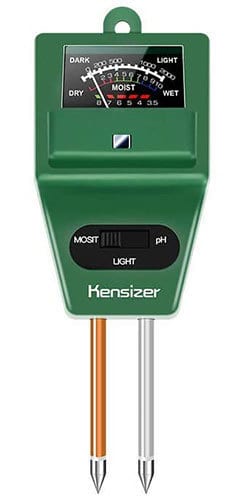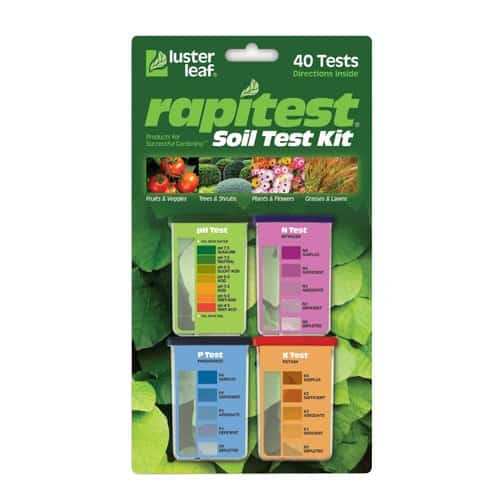How to Start a Garden: Step by Step Instructions
The Concise Online Guide to Going From Nothing to Something in Your Yard
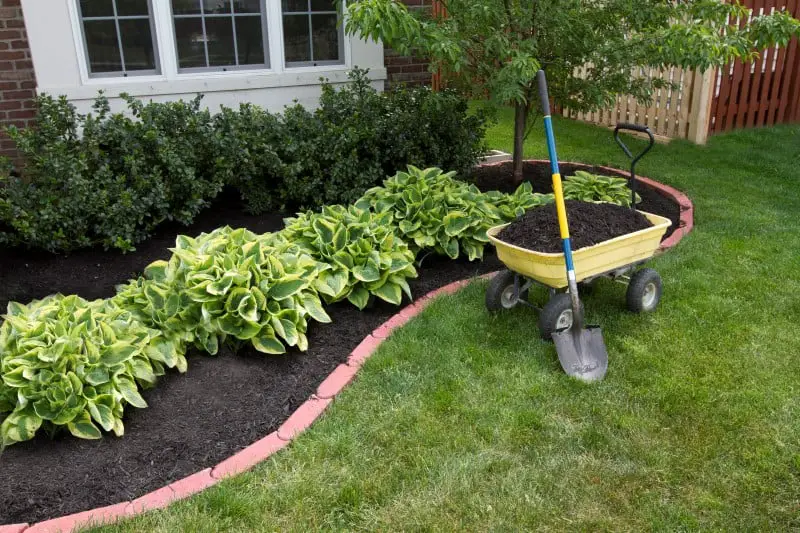
Starting a garden is simple... when you know how. Here's the concise guide to planting your very own patch
Quick Navigation
SOMEWHERE DEEP INSIDE ALL of us is hidden gardener just dying to get out and start planting. The only problem most of us face is how to start a garden from scratch.
There is nothing quite like admiring flowers that you have grown from seeds or sitting down to a nice meal complete with fresh veggies you have labored over all summer long. So that being said, let's take a good look at how you set about creating your own garden and setting that hidden green thumb lose.
Every Garden Starts With an Idea...
If you aren't sure of what garden you want or you're asking yourself 'what's possible in my garden?' then it's time to get some ideas
Most people think of growing plants in the ground, in rows and all at the same time. This is rarely the best solution. These days gardeners are more creative than ever, so their gardens fit in with their lifestyle. Got a bad back? Why not raise your garden bed up, don't have much space? Why not plant vertical instead of horizontal?
We have an entire section dedicated to garden ideas. They will help you get the most out of your garden.
Next - Size
Whether you are planning to feed your family using vegetables you have grown yourself or are simply trying to beautify the yard with one or more flowerbeds, size counts.

The size of your garden should also be determined by the amount of available space you have to work with. For example, a garden that measures 10 feet by 10 feet (100 square feet) can produce a nice supply of salad greens for your family and more if you plan it carefully. If you have enough room for a 25 ft. by 25 ft. (500 sq. ft.) plot, you can grow enough vegetables to feed the average family of four and may even have enough left over to share.
One of the most important things to remember when it comes to size or the number of garden beds you have is don't overdo it. Keep the size of your garden(s) manageable, if it is too big you are likely to become overwhelmed and give up on what can be a wonderful experience.
Choose the Location Carefully
There are two things that any type of plant you put out in your garden (both flowers and veggies) can't live without. These are sunlight and of course water. Since almost all vegetables and most flowers require full sunshine in order to thrive.
Most botanists agree that plants need a minimum of six hours of sunlight each day throughout the growing season. While there are some plants that don't need this much sun, most won't flower or produce any type of fruit (including veggies).
Sunlight First
Knowing how much sun your plants will be exposed to is extremely important when first starting your garden. If the plants you put there don't get enough or get too much sun they can die
When deciding on where to put your garden take note of how much sun the plants will see. It's also important to note the change of seasons.
In winter with the sun not being so high in the sky there is going to be more shade around. Typically this comes from when you have trees and fences on the southern side (northern side for southern hemisphere gardens) of your garden
The simplest way to find out EXACTLY how much daily sunlight the area you are considering for your garden gets is to use a sunlight calculator like this one.
All you have to do is spike this into the ground before the sun comes up and let it do its job. It measures photosynthetically active radiation (PAR) which is the type of light creates photosynthesis in plants.
It records the amount of PAR over a period of 12 hours to ensure the spot you have chosen gets enough sunlight.
Then Comes Water
Once you know the spot you have chosen gets plenty of warm sunshine all season long, the next thing is water. Whether you have a well or are planning to use a spigot as your water source, you need to be able to get plenty of water to your plants or they are not going to make it.
Of course, you can always use multiple hoses or really long ones to get the water where it needs to go. However, the longer the hose or combination of hoses happens to be, the lower your water pressure is going to be at the spray nozzle or sprinkler.
Stay Away from Trees
Trees offer your new garden two things it simply doesn't want. Shade and roots systems. The shade will,of course, limit the amount of sunlight your plants get each day (as we talked about earlier)

Tree roots are there to do one thing for the trees they come from. Suck up high levels of water and nutrients from the ground, and they are very efficient at it. Have you ever noticed how little grass tends to grow near tree roots and how sickly it looks in comparison to the rest of your lawn?
Now it's All About the Soil
NOTE: Soil is very important. To know how to prepare your soil properly before you plant we have a whole page on it dedicated to the Preparation of Soil here
Your plants also need plenty of good rich soil to grow in. This is true whether you are digging your garden in the ground or plan on using raised garden beds.
If you are not sure about the quality of your soil, you pick up a soil test kit such as this one that measures pH, nitrogen, phosphorus, and potassium,all of which are vital to healthy plant growth.
If the soil where you plan to put your new garden lacks the proper levels of these important nutrients, you can always improve it.
This is done by adding organic matter such as compost, peat moss, decaying leaves, manure, and grass clippings to the soil by digging it in after the ground has been cleared.
If you are not planning to plant right away, you can add a layer of these materials on top and let them work their way in without digging.
The Tools of the Garden Trade
In reality, you don't have to spend a fortune on garden tools to get started. There are inexpensive options that will do they job when you are starting out. You can also make a trip to the local thrift/charity store, find a yard/garage sale or use an online classifieds like craigslist or eBay.
Here is a list of the basic garden tools you need in order to dig in and start putting your garden together:
The Must Haves
- A pair of leather garden gloves for use while digging
- A pair of good quality garden shoes or boots to protect your feet
- A pair of secateurs
- A garden spade
- A garden fork
- A Hori-Hori Knife (aka the ultimate gardeners tool)
- A garden rake
- A garden hoe
- A garden hose and spray nozzle
- A garden sprayer
- A wheelbarrow or garden cart
- A plan of action
The Nice to Haves
Clearing Your New Garden
Now that you know exactly where you are going to create your brand-new garden, it's time to clear the ground and get it ready to start growing.
If you are cutting your garden into an area of lawn, the first thing you need to do is remove the grass. There are three ways you can do this:
- Digging it all up by hand
- Using a power tiller to dig it into the soil
- Covering it with several layers of newspaper which will block the sunlight and kill the grass off

Working the soil by hand sounds organic,, but is hard work
Each of these has their advantages and disadvantages you need to consider before you make your final decision.
Method | PROS | CONS |
|---|---|---|
Digging by hand | Gets rid of the grass while turning the soil over at the same time | Digging a new garden by hand can be very hard |
Digging in with a tiller | A lot less labor intensive and lets you clear a large area quickly | Turns the grass and roots into the ground where they will start to grown again unless you remove all of it |
Covering with newspaper or plastic | Very little effort and in time will kill the grass | Time-consuming as it will take quite a while for the grass and roots to die |
NOTE: The larger your garden, the better off you are with powered help. Covering the grass with plastic will still require some manual preparation.
Dig the Soil First
No matter whether you choose to dig your garden by hand or kill the grass with sheets of plastic, you will still need to turn the soil over. But the question is how far down do you dig?
To a certain extent, the depth of your garden is decided by the plants you intend to grow. Most flowers have shallow root systems and digging down around 12 inches should be enough.
When it comes to vegetable gardens, the depth is far more important as some vegetables like peas,green beans, and wax beans have shallow roots, but others like potatoes and corn need more depth to be able to grow.
For myself, I dig my garden by hand and try to keep the depth between 12 and 18 inches as this lets me grow just about anything successfully. Typically, this is the length of the average garden fork tines, so if you sink the fork in all the way to the top of the tines, you should be okay.
Add Soil Improvements
This is a great time to dig in any soil improvers such as manure or compost.
The type of compost or organic fertilizer you use will be dictated by the plants that you grow. The best place to start is to look for any information on the plant or seed packet. You can also go to Wikipedia and search for the type of plant you have
Bear in mind you should not try to dig in soil that is too wet. Not only will this make the job much harder, but digging in soil that is too wet or too dry can actually damage its structure. A good rule of thumb is the soil needs to be damp enough to form a loose ball in your hand.
Level It Off
Once you have completely dug in your new garden and added any soil improvements, take a garden rake and level the entire surface. Not only does this make your garden more aesthetically pleasing, but it helps to remove rocks and pebbles that do not belong in a garden.

Raking also encourages more uniform water absorption, which in turn ensures better sprouting and growth
Keep Out!
One last thing to keep in mind once your garden soil is fully turned over and level off, keep your feet out of it. Stepping on the soil compacts it and reduces water absorption and aeration.
You will need to make walkways between the beds but try to keep them to a minimum in order to maximize the size of the beds themselves.
Take a look at this great video about starting your first garden:
Should You Fence In Your Garden?
One question that many new gardeners ask concerns whether you should fence in your garden. While fencing can be expensive, you may find it to be a worthwhile investment if you live in an area with a lot of feral animals or small children who like to run and play.
In most cases, you don't really need to fence in a flower garden, but with a vegetable garden, it's a completely different story. In the end, you must weigh the potential risks against the cost and decide which is likely to cost more in the long run.
Remember fencing should be a one-time investment.
Create Your Plan of Action
NOTE: See the in-depth guide to plant spacing for new gardeners here
By now you should have already put together a good idea of what you want to grow in your garden. Even the most avid of gardeners spend the winter months poring over their favorite seed catalogs from companies like Burpee, Gurney's, and Territorial Seed Co. Seasoned gardeners know where in the garden they can place each type of vegetable for the best results.
The good news is that top-quality seed companies tell you how much growing space each variety requires for them to produce the best crops. You can use this information to determine where to plant what in your garden.
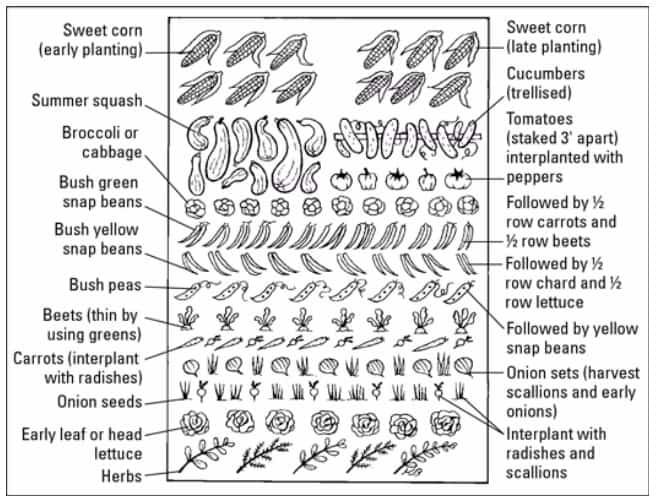
Garden plan image courtesy of dummies.com
Try making a paper map of your garden and marking it off in feet so that you create a grid to work with. Then you can move plants around until you have optimized every square foot of your garden. Be sure to give each type of plant plenty of room.
Depending on what varieties of plants you expect to grow, you may be able to get a head start by planting the seeds in containers several weeks before it is time for them to go out in the garden. You can do this in a greenhouse or in a room in your home where they can sit in the window or under a grow light.
You can also buy ready to go plants at most garden nurseries that you simply take home and plant out in your new garden.
This a good example of making the most out of every square inch of a garden. Remember that each type of vegetable matures at a different rate. Be sure to leave room between the plants to walk so that you can weed around them, thin them out, and harvest your bounty.
Consider Seasonal Plants
NOTE: See our guide on what to plant in June here
If your growing vegetables using a seasonal map for your region, you can determine what will and what won't grow in your area. You can also determine the best time of year to plant each variety for the best results.
You may also find that some mature quickly enough that you can replant or reuse the space for another type of plant. In reality, careful planning is the most important stage of creating a new garden that is capable of feeding your family and maybe a few friends.
Sounds Like a Lot of Work...
If all of this sounds like a lot of work, take it from me, digging your garden in for the first time is hard work. But once it is done and you have a beautiful bed of flowers to enjoy or are sitting there munching on a fresh salad you harvested right out of your own garden, you are sure to look back on the work with a smile on your face.
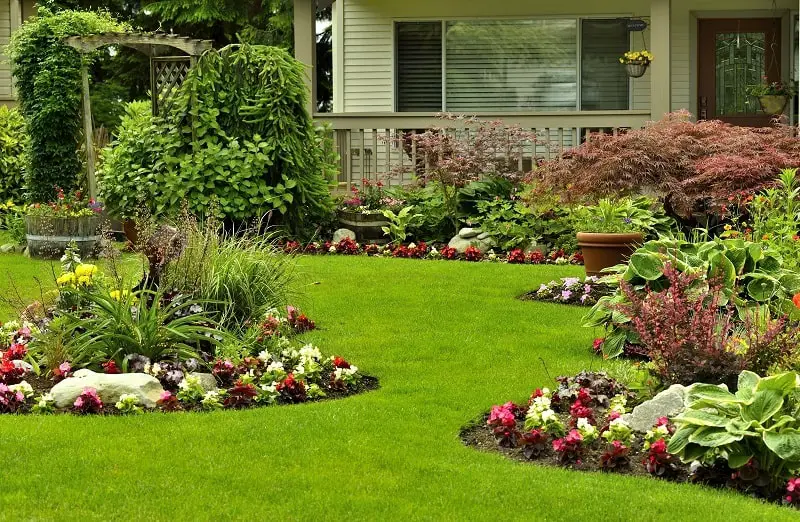
Just make sure your first garden is manageable in size so you don't feel over whelmed and become discouraged. The good thing is that the size of your garden is only limited by the amount of space you have to work with and how much effort you are willing to put into it.
Remember, as long as you have the space to work with, you can always increase the size of your garden each year until it reaches its final size. Sure it's lots of hard work, but the results are more than worth all of the time and effort.
What are you waiting for?
Get out there and dig in, your new garden is just a few forkfuls of soil away!
If you have enjoyed learning about starting a garden, please let me know. If you have any information you would like to see here, please contact me here.
Thank you for reading this guide on how to start a garden, I hope you found it useful
Related Articles:

